The Philippines and the US have launched the largest iteration of their annual Balikatan military drills, deploying thousands of soldiers in what has been called the “Super Bowl” of exercises for its unparalleled scale.
The 40th edition of Balikatan, which means shoulder-to-shoulder in Tagalog, is scheduled to take place from 21 April to 9 May. The drills are expected to involve some 14,000 troops, with contingents from the UK, France, Canada, Australia and Japan also participating.
In addition, as many as 19 countries are set to join as observers for the exercises this year, which the Philippine military notes highlights their shared commitment to peace, security and stability in the Indo-Pacific region.
The “full battle tests” will also underscore the intent of the US, the security partner of the Philippines, to continue its military support for the southeast Asian nation at a time when it faces intensifying pressure from China.
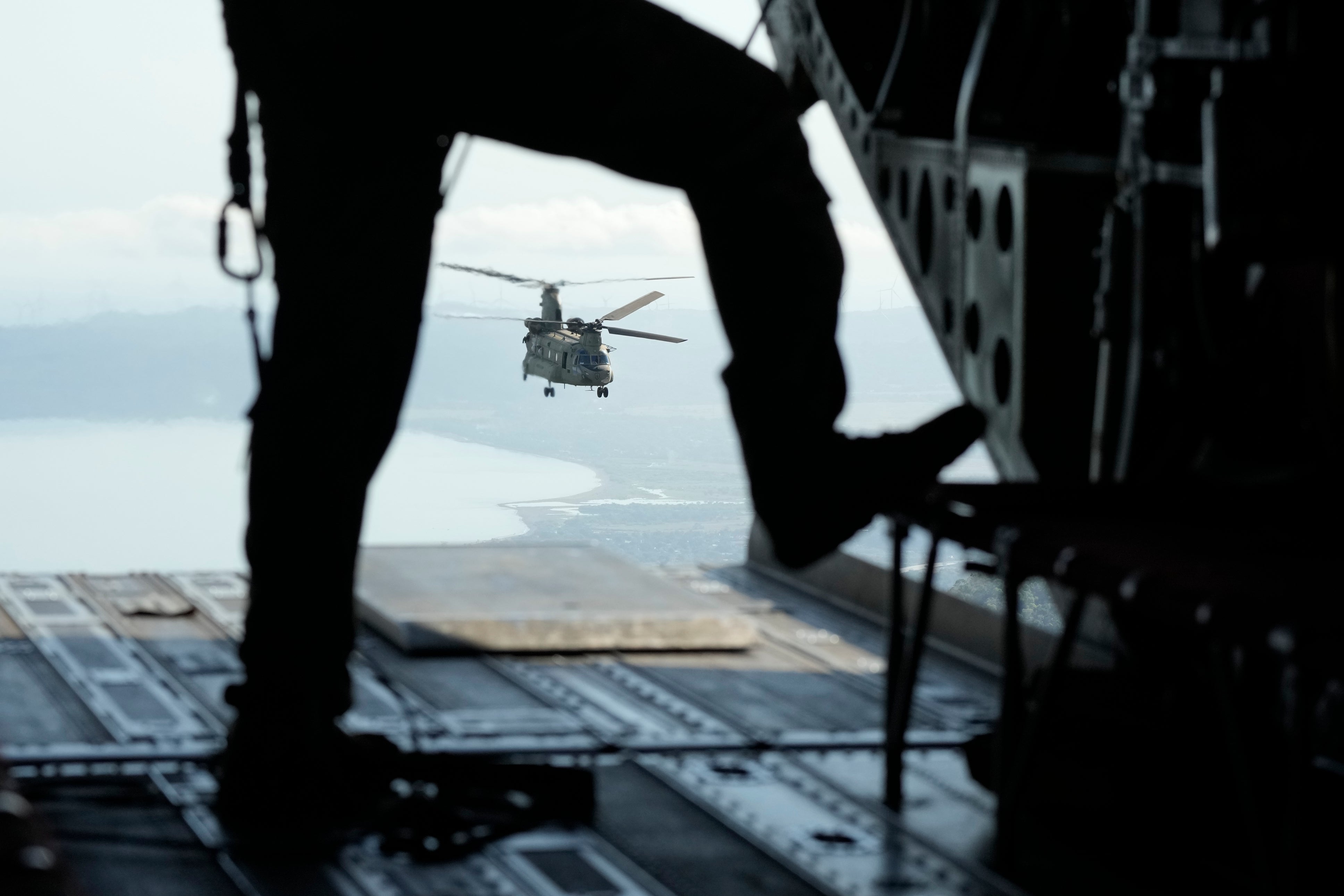
Nearly 9,000 troops from the US and 5,000 from the Philippines are taking part in the 18-day war games across western and northern Philippines, facing the regional flashpoints of the South China Sea and Taiwan.
Brigadier General Michael Logico, of the Philippine army, said the drills would simulate realistic defence scenarios, marking a significant evolution in scope and complexity.
“This is the Super Bowl of all exercises in this part of the region,” the general added. “The full battle tests are intended to take into consideration all of the regional security challenges that we face today, beginning in the South China Sea.”
Major General Francisco Lorenzo, director of this year’s exercises for the Philippines, tried to downplay the perception that the military drills were aimed specifically at China.
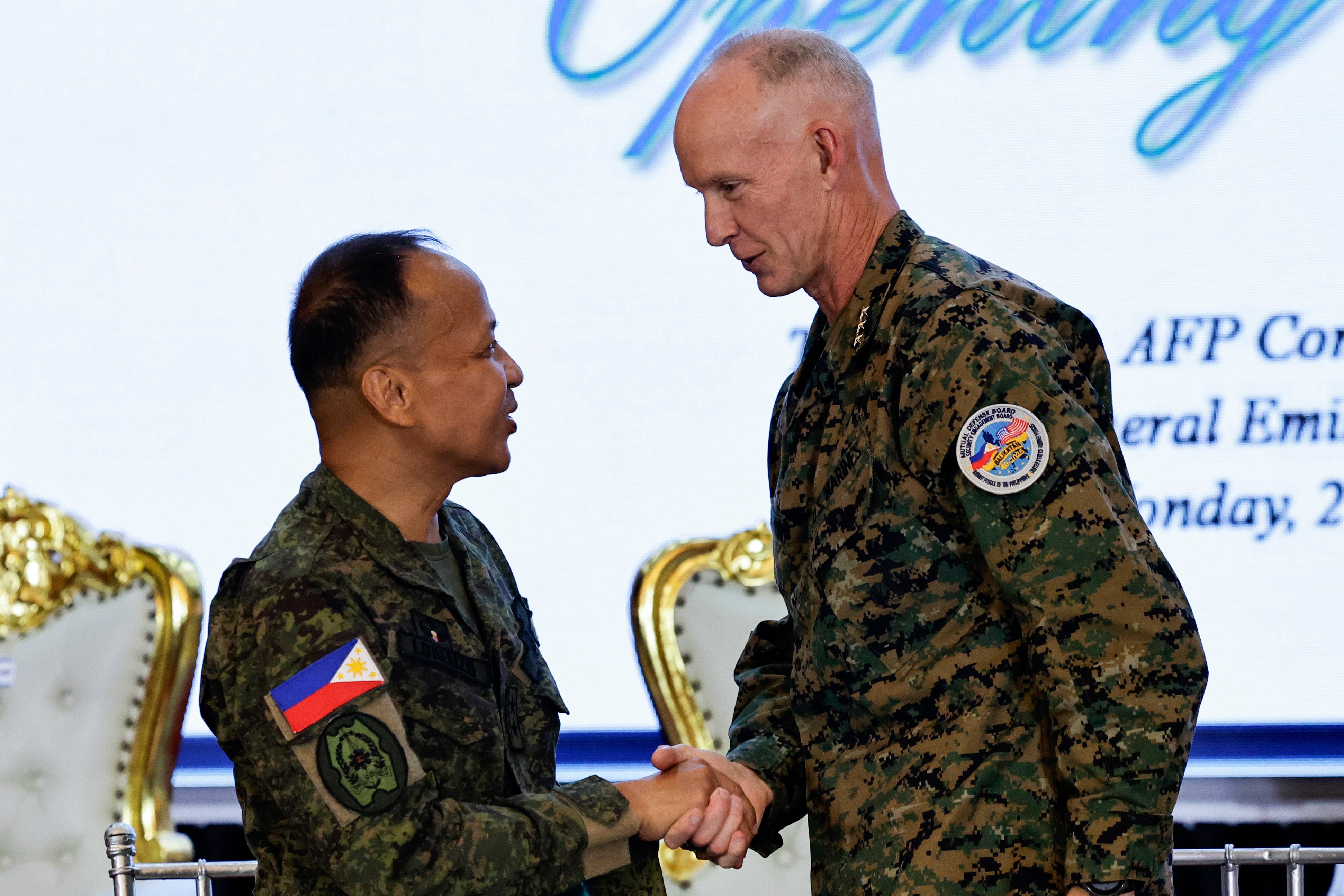
“Balikatan is not against any nation but it’s a joint training with US forces to increase our capability in securing our territory,” he said. “The Balikatan exercise may probably help deter the conflict in Taiwan. But for our concern, it is only for deterrence of any possible coercion or invasion of our country.”
To test the defences of the archipelago, the exercises will involve fighter jets, warships, and an array of weaponry deployed to simulate repelling an island attack.
The US is deploying advanced weaponry for the drills such as the Typhon missile system, capable of launching Tomahawks that could reach China and Russia, and the NMESIS anti-ship missile system.
US defence secretary Pete Hegseth said in Manila last month that Washington would be deploying the NMESIS system for the first time in the war games, covering air and missile defence in northern Luzon and the Batanes Islands.
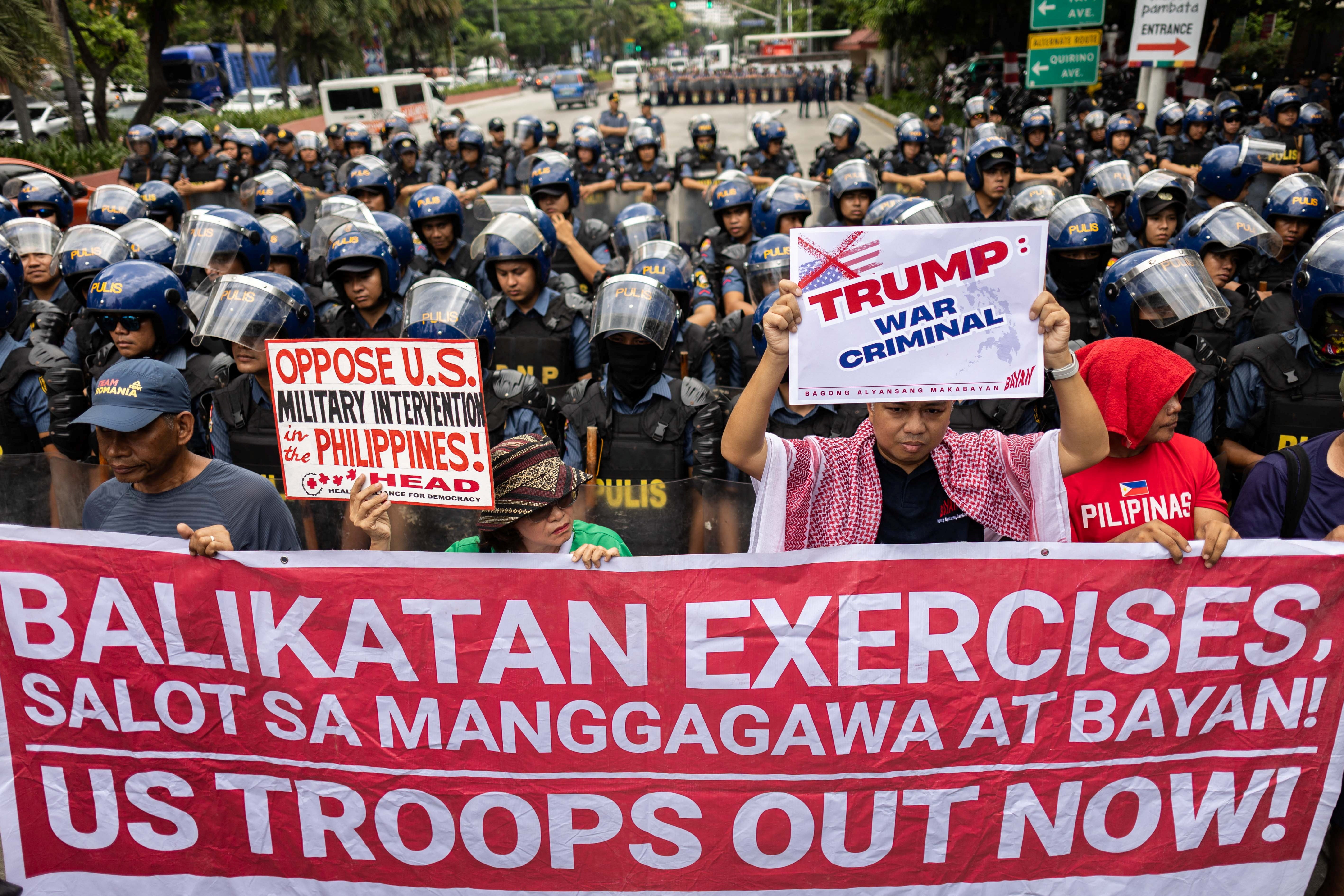
“We are ready,” US Marine Corps Lieutenant General James Glynn told a press briefing when asked if Washington and Manila had the capability to address any major acts of aggression in the Taiwan Strait or the South China Sea after years of joint combat exercises.
“Our combined strength,” Gen Glynn said in his speech at the opening ceremony of the drills, “possesses a degree of lethality for a force that possesses an indomitable warrior ethos and spirit. It’s all dedicated to one purpose, to ensure the defence of the Philippines and to maintain a free and open Indo-Pacific.”
The opening ceremony of the exercises was marked by a protest in Quezon City demanding the withdrawal of foreign troops from the Philippines.
The protesters burnt mock flags of the US and raised banners reading “Stop US-led wars” and “Stop Militarisation”. Many said they feared the presence of foreign soldiers could fuel tensions with China. Some described the US as an “imperialist” nation.
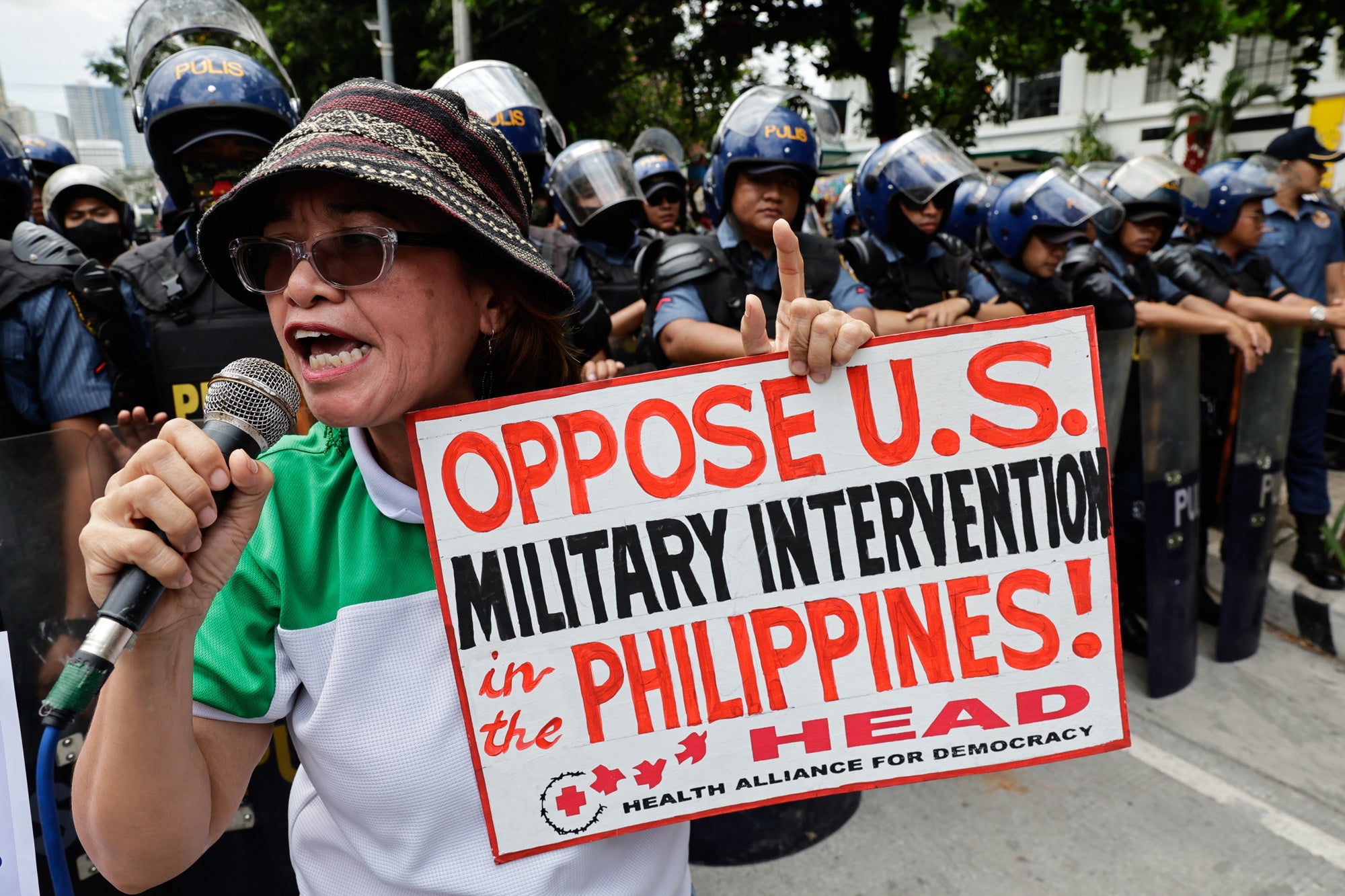
China expressed its strong opposition to the exercises saying previous editions had seen war games conducted beyond the territorial waters of the Philippines and into its exclusive economic zone.
Chinese foreign ministry spokesperson Guo Jiakun said on Monday that Beijing firmly opposed any country using Taiwan as an excuse to strengthen regional military deployment and “provoke tension and confrontation”.
“The parties concerned are advised not to provoke on the Taiwan issue, and those who play with fire will burn themselves,” Mr Guo said at a regular press briefing.
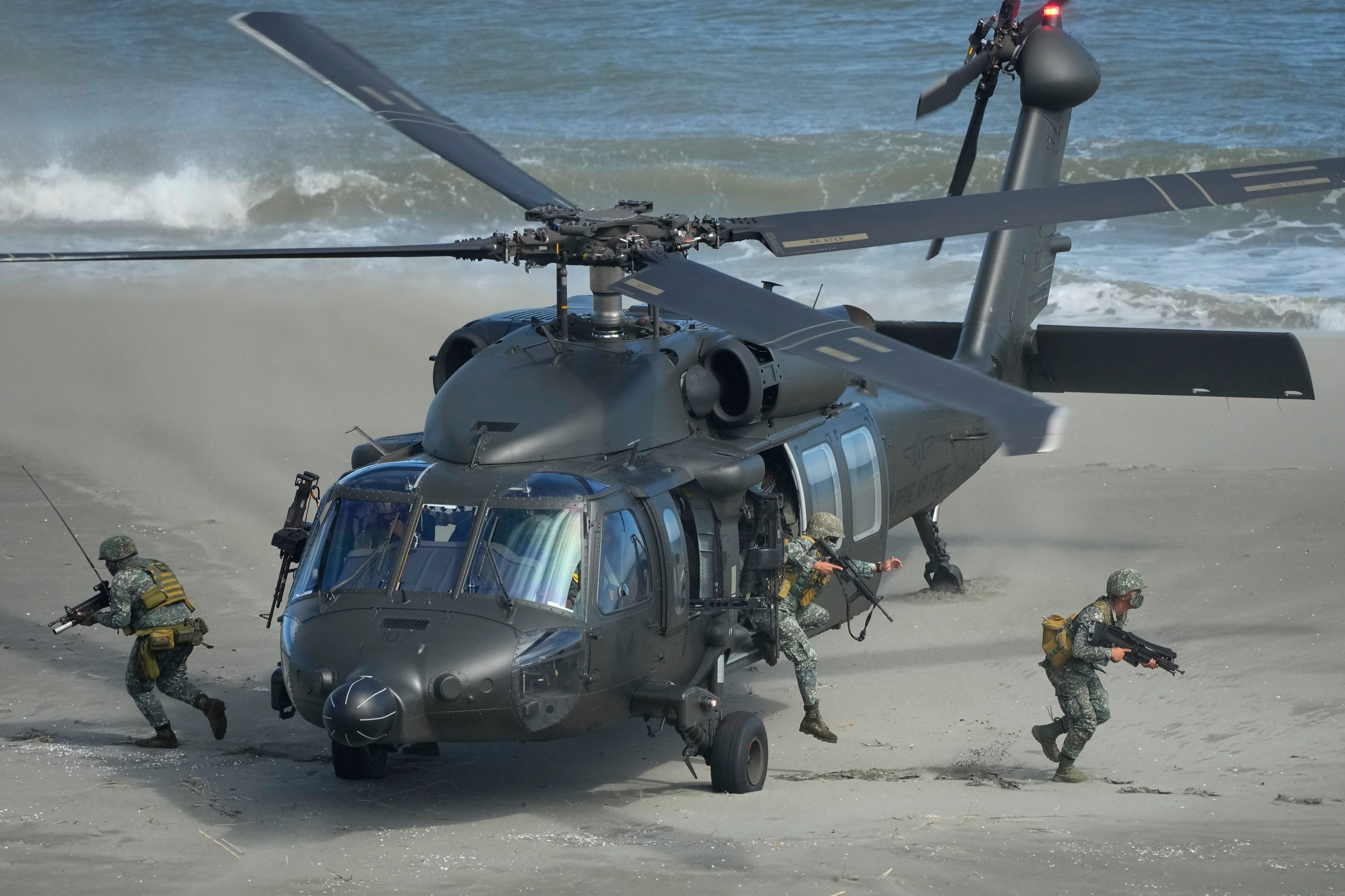
Tensions between Manila and Beijing in the South China Sea, especially over disputed areas like the Second Thomas Shoal and Scarborough Shoal, have been going on for several years but have escalated significantly since 2022. There have even been violent clashes in recent years involving their coastguard personnel and maritime militias.
China’s navy said on Sunday that a Philippine frigate had “illegally intruded” into the waters of Scarborough Shoal, “seriously violating” Chinese sovereignty and laws.
The navy monitored and drove the vessel away, it said.
A navy spokesperson urged the Philippine side to immediately stop the “infringement and provocation”.







